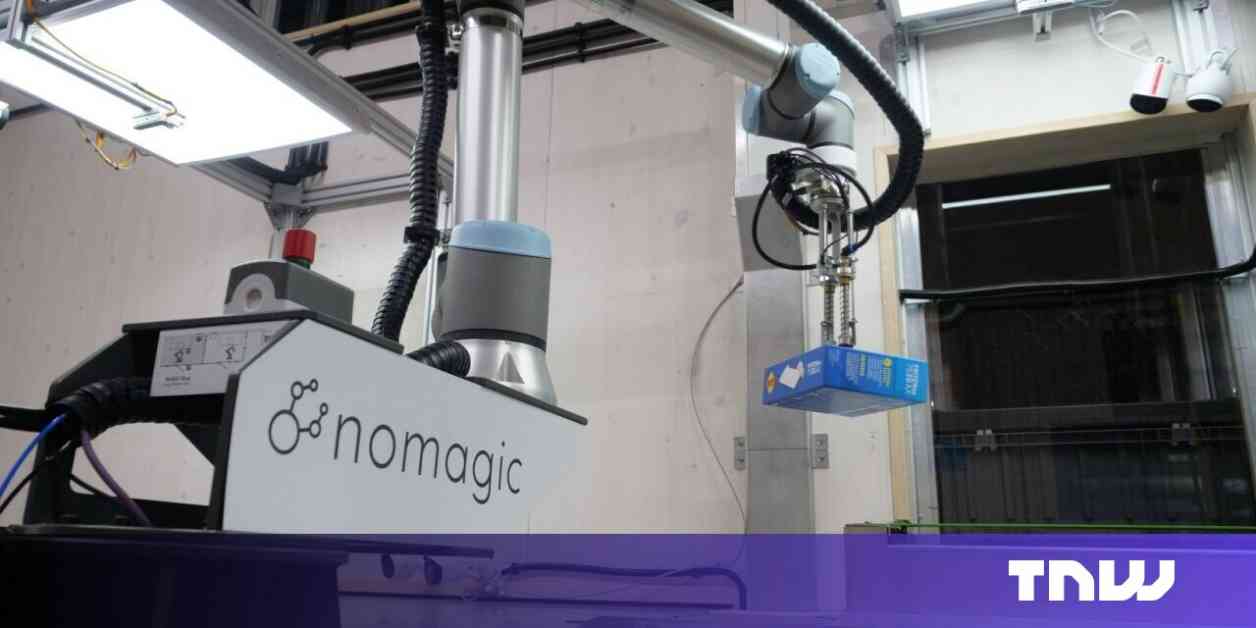The race to implement robotics in Europe’s warehouses is heating up, with companies like Nomagic leading the charge. Nomagic, a Warsaw-headquartered firm, has been pioneering the use of robot arms in warehouses across the continent. These robot arms undergo rigorous training every night, practicing picking up items to test the effectiveness of their algorithms.
Tristan d’Orgeval, co-founder and chief of strategy at Nomagic, emphasizes the continuous effort required to ensure the robot arms perform as intended. If successful, the updated algorithms are uploaded to the live system for use in warehouses. With 70 employees and $39 million raised to date, Nomagic is making significant strides in the robotics industry.
The robot arms deployed by Nomagic are tasked with picking and moving a wide variety of items, from t-shirts to bags of screws. They work tirelessly in warehouses, lifting items out of storage bins, sorting them, and placing them into boxes for shipping. Companies like fashion retailer ASOS and logistics firm FIEGE are already utilizing Nomagic’s robot arms to enhance their warehouse operations.
The adoption of AI and robotics in warehouses is on the rise as retailers and logistics companies seek to streamline their sorting and shipping processes. However, these technologies are not without their challenges. Robots can sometimes make errors such as picking the wrong item or taking the wrong path within a warehouse. Despite these imperfections, the industry sees significant potential in automation.
Nomagic’s robot arms are equipped with cameras to analyze the items they are picking up. They can lift items weighing up to 5kg and automatically choose the appropriate tool for grasping each item based on its size, shape, and material. This level of precision is crucial for ensuring that the robot arms can pick 95% or more of the items in a warehouse, providing value to customers.
Human supervision is still essential in warehouse operations involving robots. While the robot arms can perform tasks efficiently, human operators are needed to intervene in case of unexpected challenges. Nomagic has a team of operators who monitor the robots in action and can address any issues that arise during the picking process.
The shortage of warehouse workers is a pressing issue that automation aims to address. Mehmet Dogar, a researcher at the University of Leeds, emphasizes the importance of robots coexisting safely with humans in warehouse environments. While robots offer efficiency and accuracy, they must be carefully integrated into existing workforce structures to minimize disruptions.
Opteran, a UK startup, is taking a unique approach to robotics by developing AI algorithms inspired by animal brains. By studying neural activity in insects, Opteran aims to replicate their navigational abilities in robots. This bioinspired approach offers robustness and adaptability, allowing robots to navigate warehouse environments effectively.
Collaborations between companies like Opteran and SAFELOG, a German logistics technology company, are driving innovation in warehouse automation. Opteran provides software for SAFELOG’s automated guided vehicles (AGVs), enhancing their localization, mapping, and collision avoidance capabilities. These advancements demonstrate the potential for AI and robotics to revolutionize warehouse operations.
The impact of automation on warehouse jobs is a topic of debate, with some fearing job losses while others see opportunities for new roles and improved efficiencies. David Rajan, CEO of Opteran, emphasizes that automation can lead to the evolution of jobs rather than their elimination. By working alongside robots, humans can leverage automation to enhance productivity and safety in warehouse settings.
As the adoption of automation in logistics continues to grow, it is essential to consider how it is integrated with existing workforce structures. The key to successful automation lies in effective collaboration between humans and robots, ensuring that the benefits of technology are maximized while mitigating potential risks.
In conclusion, the race to implement robotics in Europe’s warehouses is accelerating, with companies like Nomagic and Opteran leading the way. By leveraging AI algorithms and bioinspired approaches, these companies are revolutionizing warehouse operations and driving efficiencies in the logistics industry. As automation continues to evolve, it is essential to prioritize the coexistence of humans and robots in warehouse environments to ensure a seamless transition to a more automated future.






















